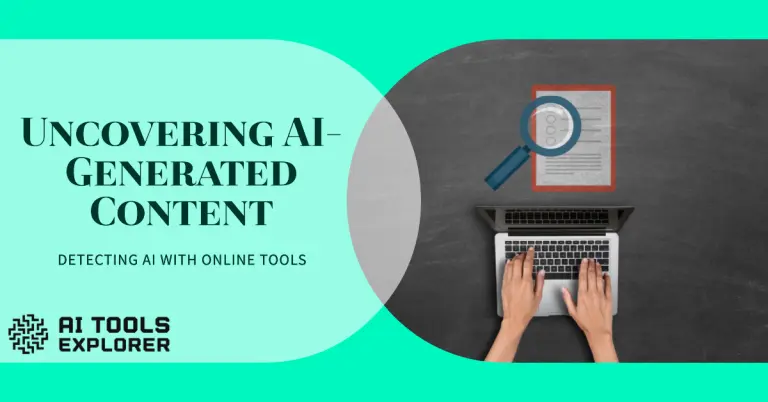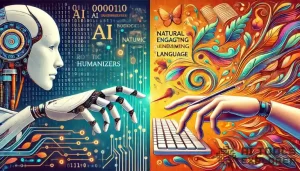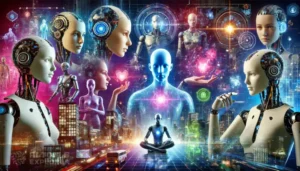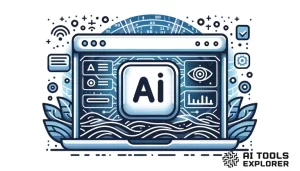AI-generated content is becoming increasingly prevalent, leading to a growing need for AI detector tools that can detect such content. AI writing is on the rise and a reliable detection method is required so we can identify AI-authored content. We will take a look at some of the options available online and will discuss the potential risks and ethical concerns surrounding AI-written content.
The Rise of AI-Generated Content and Its Implications
AI-generated content is on the rise, as more organizations and individuals turn to AI-powered tools for content creation. This rapid growth has significant implications for various areas of real life, such as education and industries. In this section, you can discuss the reasons behind the increased use of AI-generated content, the potential advantages and disadvantages, and the concerns that arise due to the growing reliance on AI-powered content creation.
Featured AI Detection Tools
The Significance of Identifying AI-Generated Content
The ability to detect AI-generated content is crucial for several reasons:
Academic integrity: In educational settings, students may use AI-generated content to complete assignments, write research papers, or even create entire theses. This not only undermines the educational process but also raises ethical concerns about academic dishonesty and plagiarism.
Professional credibility: In the professional world, AI-generated content can be used to create books, articles, reports, and other materials without proper attribution. This could lead to the spread of misinformation, copyright infringements, and damage to professional reputations.
Content quality: AI-generated content often lacks the depth, nuance, and personal style that is inherent in human-authored content. Detecting and differentiating between AI-generated and human-authored content ensures that readers receive accurate, reliable, and high-quality information.
Legal and ethical implications: As AI-generated content becomes more prevalent, questions regarding intellectual property rights, authorship, and accountability will continue to arise. Identifying AI-generated content is crucial for navigating these legal and ethical challenges.
Tips for Discerning AI-Generated Content from Human-Authored Content
For readers who want to become more discerning consumers of content, here are some practical tips on how to differentiate between AI-generated content and human-authored content:
- Look for inconsistencies: AI-generated content may contain inconsistencies in tone, style, or facts. Pay attention to these inconsistencies as they can be indicators of AI-generated content.
- Evaluate sources: Check the credibility of the sources cited in the content. AI-generated content may rely on questionable or unrelated sources.
- Check for grammar and syntax: While AI-generated content can be quite sophisticated, it may still contain grammar and syntax errors that can help identify it as machine-generated.
- Use an AI Detection tool
AI Detection Tools
Several online tools have been developed to detect AI-generated content. Each of these AI tools employs unique algorithms and techniques to analyze and determine whether the content in question has been generated by AI or written by a human. Here is a comprehensive list of popular AI detection tools, with links provided for easy access:
It is important to note that the accuracy of these tools can vary, and detecting AI-generated content remains a hit-and-miss process.
The Limitations and Challenges of AI Detection Tools
While AI detection tools can provide valuable insights into whether content is AI-generated or human-authored, they are not without their limitations:
Inaccurate results: The accuracy of AI detection tools can vary significantly, and no tool is currently capable of providing 100% accurate results. This means that some AI-generated content may go undetected, while human-authored content may be incorrectly flagged as AI-generated.
Evolving AI technology: As AI technology continues to advance, the sophistication of AI-generated content will also improve. This may make it increasingly difficult for AI detection tools to distinguish between AI-generated and human-authored content, as the line between the two becomes even more blurred.
Lack of standardization: There is currently no universally accepted standard or benchmark for evaluating the performance of AI detection tools. This makes it challenging to compare the effectiveness of different AI tools and determine which one is best suited for a particular use case.
Potential biases: AI detection tools may exhibit biases based on the training data used to develop their algorithms. Developers continuously work to minimize and address any biases; however, the possibility of biased results still exists.
Ethical Concerns and Potential Risks of AI-Generated Content
AI-generated content has sparked various ethical concerns and potential risks. In this section, we will delve into specific examples and case studies that highlight these issues.
- Plagiarism: AI-generated content can create the illusion of originality, while actually borrowing from multiple sources. This can lead to issues of plagiarism and intellectual property theft.
- Misinformation: AI-generated content may spread misinformation or false information, which can have serious consequences for individuals, businesses, and society as a whole.
- Bias: AI-generated content can inadvertently perpetuate harmful stereotypes or biases, as the AI may be trained on biased datasets.
The Future of AI-Generated Content
As AI technology continues to advance, we can expect the capabilities of AI-generated content to evolve as well. In this section, we will discuss the potential advancements in AI technology and the ways in which AI content creation may develop in the future:
- Improved accuracy and coherence: Advances in AI technology may lead to more accurate and coherent AI-generated content, reducing the need for human intervention.
- Greater customization: AI-generated content may become more personalized, catering to individual preferences and interests.
- Ethical considerations: As AI-generated content becomes more prevalent, there may be increased efforts to address the ethical concerns and potential risks associated with it.
Key Takeaways
| Rise of AI-Generated Content | Increasing use of AI tools for content creation across various sectors. |
| Significance of Detection | Essential for maintaining academic integrity, professional credibility, content quality, and navigating legal/ethical issues. |
| Academic Integrity | AI-generated content can undermine educational processes and raise ethical concerns about academic dishonesty. |
| Professional Credibility | Risks include spreading misinformation, copyright infringement, and damage to reputations. |
| Content Quality | AI content may lack depth and personal style, necessitating detection for reliable information. |
| Legal and Ethical Implications | Identifying AI content is crucial for intellectual property rights, authorship, and accountability. |
| Tips for Discerning AI Content | Look for inconsistencies, evaluate sources, check grammar and syntax, and use detection tools. |
| AI Detection Tools | Various online tools exist to detect AI-generated content, but their accuracy can vary. |
| Limitations of Detection Tools | Inaccurate results, evolving AI sophistication, lack of standardization, and potential biases. |
| Ethical Concerns | Plagiarism, misinformation, and perpetuation of biases are significant ethical issues with AI content. |
Conclusion
As AI-generated content becomes more prevalent, the importance of detecting and differentiating it from human-authored content grows. By using AI detection tools and developing an eye for spotting the telltale signs of AI-generated content, you can ensure that you’re consuming and sharing accurate, reliable, and high-quality information.
FAQs
What is an AI Content Detector?
An AI Content Detector is an online tool designed to analyze content and determine whether it was generated by AI or authored by a human.
Is the AI Content Detector biased?
AI Content Detectors may exhibit biases based on the training data used to develop their algorithms. However, developers of these tools work continuously to minimize and address any biases.
Should I use an AI detection tool?
Using an AI detection tool can be helpful for identifying AI-generated content, particularly in academic and professional contexts where the authenticity of content is crucial.
What AI content detector tool should I use?
The choice of AI content detector tool depends on your specific needs and requirements. We recommend reviewing and comparing the features, accuracy, and ease of use of various tools to determine the best fit for your needs.








